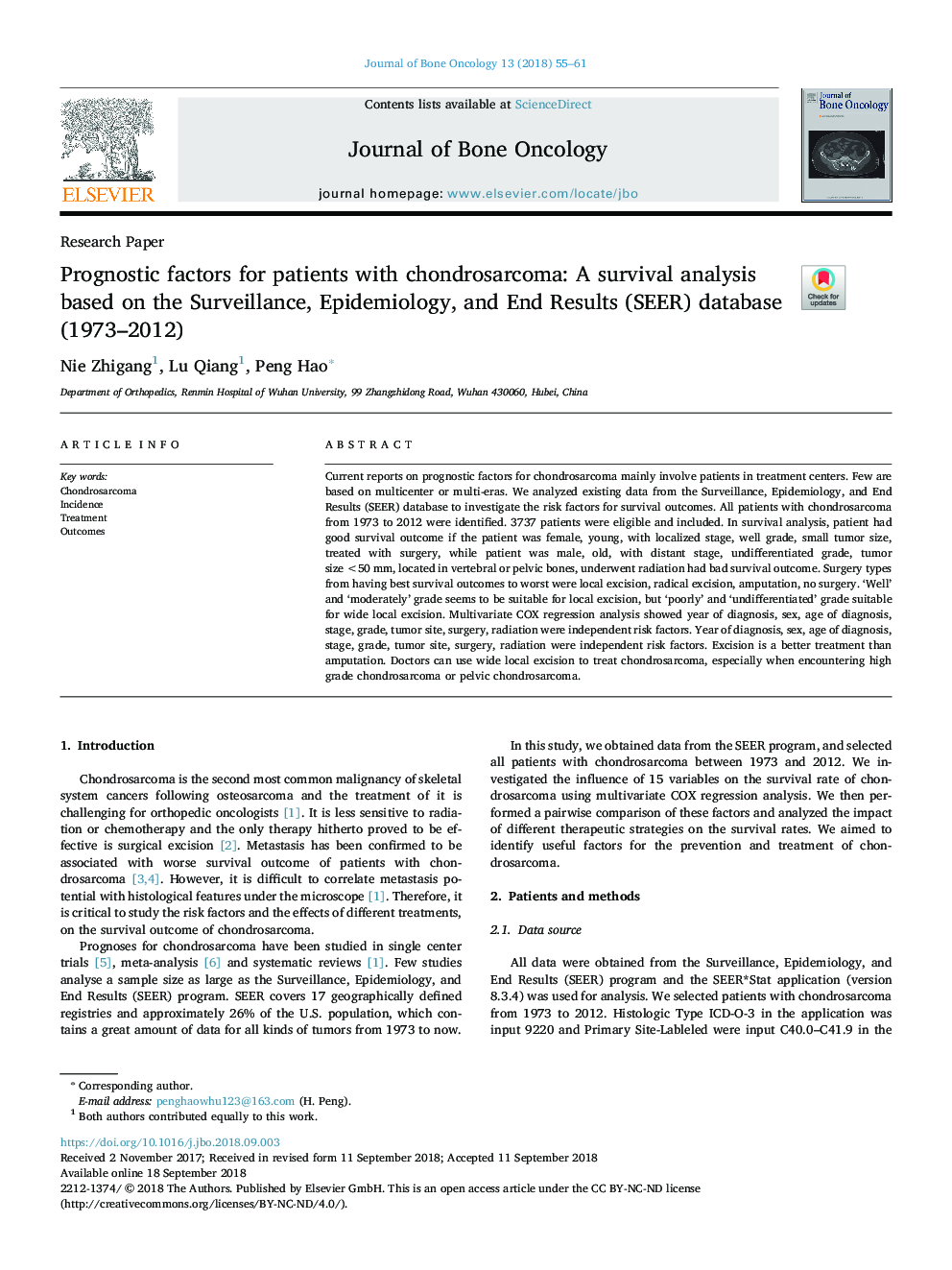| Article ID | Journal | Published Year | Pages | File Type |
|---|---|---|---|---|
| 10157683 | Journal of Bone Oncology | 2018 | 7 Pages |
Abstract
Current reports on prognostic factors for chondrosarcoma mainly involve patients in treatment centers. Few are based on multicenter or multi-eras. We analyzed existing data from the Surveillance, Epidemiology, and End Results (SEER) database to investigate the risk factors for survival outcomes. All patients with chondrosarcoma from 1973 to 2012 were identified. 3737 patients were eligible and included. In survival analysis, patient had good survival outcome if the patient was female, young, with localized stage, well grade, small tumor size, treated with surgery, while patient was male, old, with distant stage, undifferentiated grade, tumor sizeâ¯<50â¯mm, located in vertebral or pelvic bones, underwent radiation had bad survival outcome. Surgery types from having best survival outcomes to worst were local excision, radical excision, amputation, no surgery. 'Well' and 'moderately' grade seems to be suitable for local excision, but 'poorly' and 'undifferentiated' grade suitable for wide local excision. Multivariate COX regression analysis showed year of diagnosis, sex, age of diagnosis, stage, grade, tumor site, surgery, radiation were independent risk factors. Year of diagnosis, sex, age of diagnosis, stage, grade, tumor site, surgery, radiation were independent risk factors. Excision is a better treatment than amputation. Doctors can use wide local excision to treat chondrosarcoma, especially when encountering high grade chondrosarcoma or pelvic chondrosarcoma.
Related Topics
Life Sciences
Biochemistry, Genetics and Molecular Biology
Cancer Research
Authors
Nie Zhigang, Lu Qiang, Peng Hao,
